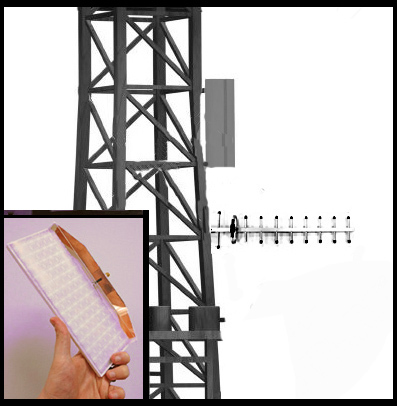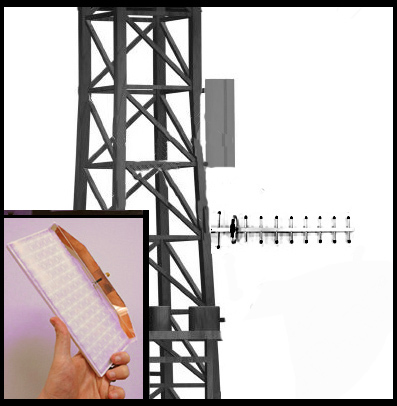BEDFORD, Mass.--(BUSINESS WIRE)--Fractal Antenna Systems, Inc. (FRACTAL) today announced upcoming issuance of a fundamental patent on unidirectional antennas, that replace existing applications with smaller, more versatile and visually pleasing options and form factors. The breakthrough is made possible by the firm’s proprietary fractal and metamaterial technology.
For more than two decades, FRACTAL has explored, developed, and invented fractal-based electromagnetic technology, using size-shrunk fractal resonators/fractal antennas with a broad and or multiband advantage. Fractals have self-similar structure on a variety of size scales. Close-packing of the fractals makes this a metamaterial, producing a unique composite: a ‘fractal metamaterial,’ that enables wave bending, gain, and control in ways previously not attained. For example, fractal metamaterials made possible the firm’s invention of the invisibility cloak, for which it now holds the patent portfolio for virtually all aspects and uses.
The new fractal metamaterial technology offers a superior alternative to Yagi-Uda antennas. Resembling a fishbone, ‘Yagis’ are among the most used of antenna designs because they produce high gain directional coverage with only one electrical connection point. But Yagis suffer from long, stretched form factors that make them susceptible to wind load, environment, and a lack of aesthetic appeal.
FRACTAL inventors found that fractal metamaterials, with their ability for wideband evanescence and surface waves, could produce parasitic antennas that were highly directional and far smaller in form factor than Yagis. From VHF to frequencies encompassing Wi-Fi and even 5G, the new “metablade”™ antennas can be drop replacements for their Yagi counterparts, while their smaller size lets them be used in situations where Yagis cannot.
A key difference for the metablade™ antennas is they are not locked into a fishbone arrangement. Notes co-inventor Nathan Cohen: “the gain doesn’t need the elongated sideways arrangement of the Yagi. Metablade™ antennas can be a smaller, vertically-oriented structure with the same or better performance than the Yagi. A metablade™ antenna looks more like the mounting bracket for an antenna rather than the antenna itself. It’s a huge difference. This becomes a superior antenna choice for tower and building owners. Fishbones are best left for the cat.”
FRACTAL recently announced its first metablade™ antenna product—a wideband antenna for public safety needs, at the In-Building Wireless Congress. Additional rollout of SCADA, Wi-Fi, 5G, and other applications commence in the fall. The metablade™ antennas are exclusively offered and sold through FRACTAL.
ABOUT FRACTAL ANTENNA SYSTEMS, INC.
Fractal Antenna Systems, Inc. (www.fractenna.com) supplies products and solutions for the world's most demanding wireless, electromagnetic, and electronic applications. Backed by over six dozen U.S., and international patents, plus patents pending, FRACTAL is the recognized pioneer in fractal and electromagnetic technology, with extensive research and field experience over 25 years in business. The company is a privately held and headquartered in Bedford, Massachusetts, USA.




